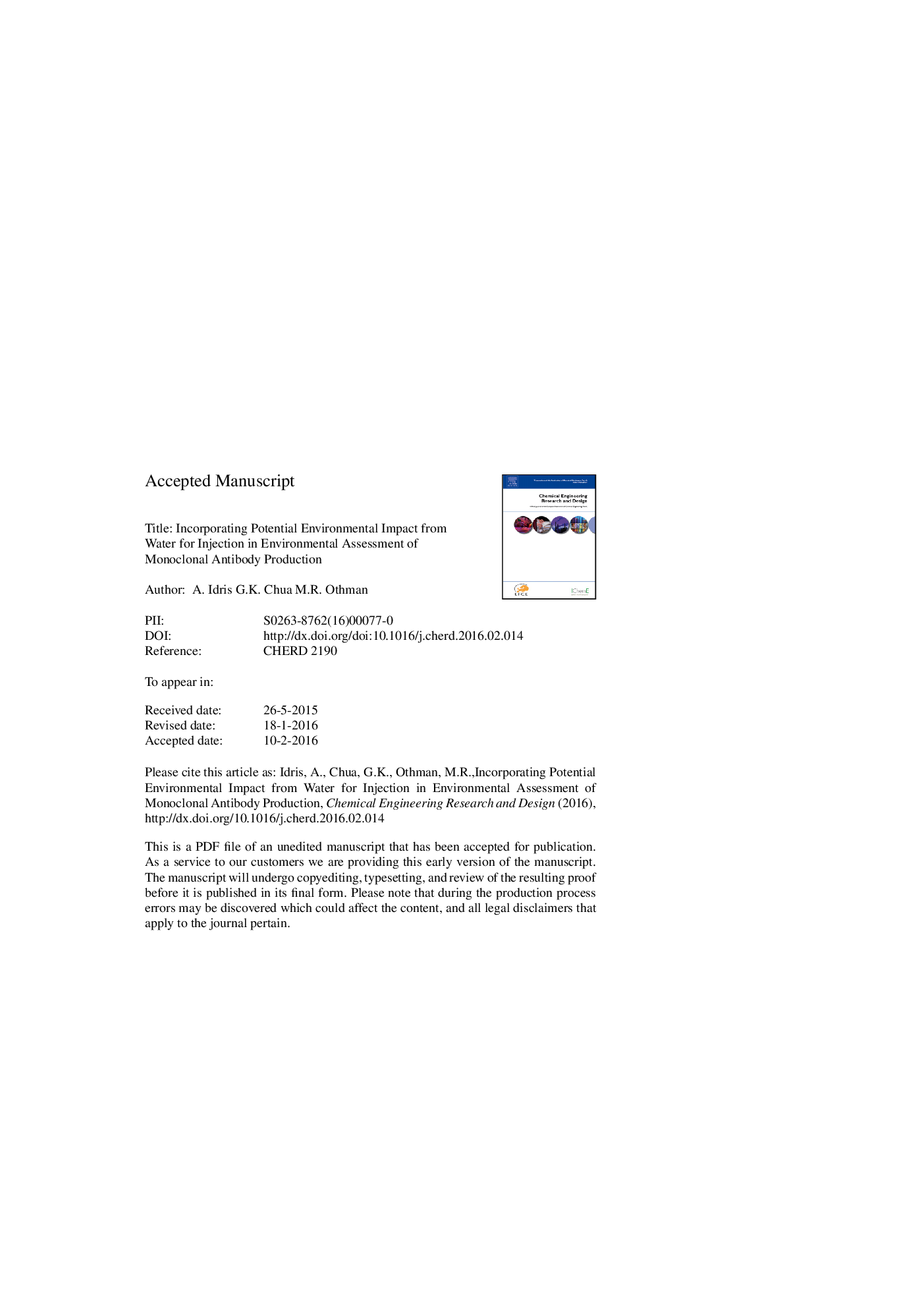| Article ID | Journal | Published Year | Pages | File Type |
|---|---|---|---|---|
| 7006746 | Chemical Engineering Research and Design | 2016 | 49 Pages |
Abstract
Biopharmaceutical industries consistently demand water for injection (WFI) in their production. WFI production requires large amount of energy that may leave environmental footprint. However, its potential environmental impact (PEI) is typically not included in environmental assessment. This paper aims to present how WFI generation would contribute to environmental pollution. It was assumed that WFI was generated in multiple effect distillation (MED), where utility steam is used as heating media. Utility steam is generated in a steam boiler, where several gas pollutants are produced as by-product. The PEI of these pollutants was estimated based on a modified waste reduction (WAR) algorithm. For data generation, MED was simulated in SuperPro Designer®. To demonstrate the way to include WFI into an environmental assessment, a hypothetical monoclonal antibody process was used as a case-study. From the case-study, it can be seen that WFI generation contributed the most to energy consumption and to the total PEI value. Therefore, it is important to include PEI from WFI in the environmental assessment for more accurate results, particularly when comparing several process designs as the results may influence decision-making.
Keywords
PEIVCDGMPLC50CIPODSTWAIEXNa2HPO4TLVThreshold Limit ValuesLD50KClTTPUSPOSHAGWPACGIHATPENaH2PO4KH2PO4WAR algorithmWFImAbNOxODPSOxwater for injectionATPMonoclonal antibodyUnited States Environmental Protection AgencyEDTAEthylenediaminetetraacetic acidOccupational Safety and Health AdministrationEnvironmental assessmentLCALife Cycle Assessmentaqueous two-phase extractionReverse OsmosisNitrogen oxidesCarbon oxidesSulphur oxidesUnited States pharmacopoeiaHICMEDPotential environmental impactMultiple effect distillationCleaning in placeMonoclonal antibody productionWarSO2disodium hydrogen phosphateSodium dihydrogen phosphateCarbon dioxideHydroxyl radicalGood Manufacturing PracticesEuropean PharmacopoeiaNational Institute for Occupational Safety and HealthNitrogen dioxideNO2NIOSHPotassium dihydrogen phosphateAcidification PotentialOzone depletion potentialglobal warming potentialWaste reductionCO2hydrophobic interaction chromatographyIon exchange chromatographyPotassium chloride
Related Topics
Physical Sciences and Engineering
Chemical Engineering
Filtration and Separation
Authors
A. Idris, G.K. Chua, M.R. Othman,
